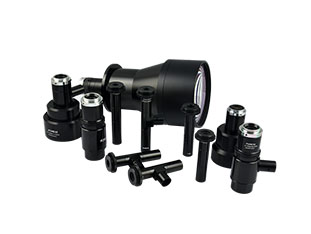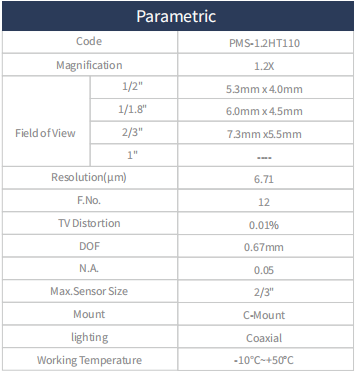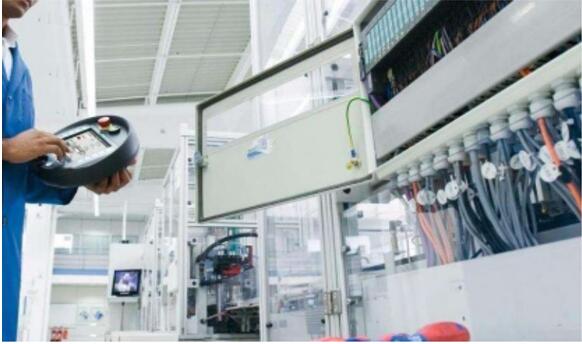
Beginner's Guide | Industrial Telecentric Lens Parameters Popularization
Industrial telecentric lenses are indispensable optical components in the field of industrial inspection, which are composed of several sets of carefully designed lenses, and their unique feature is that they can accurately project the captured light onto the light-sensitive film, thus forming a clear picture. Telecentric lenses are used in a wide range of applications in industrial production, where they play an important role in detecting the overall condition of a machine, minor defects in small parts, or observing the characteristics of tiny objects and checking the accuracy of a machine.


For the novice, in-depth understanding of the parameters of the telecentric lens is the key to selection.
The following shows the parameters of POMEAS high resolution telecentric lens PMS-1.2HT110 as an example

(1) The magnification determines the size of the imaging, and different magnifications are suitable for different sizes of inspection objects;
(2) The working distance refers to the distance from the front of the lens to the detected object, and the appropriate distance ensures the clarity and stability of the imaging;
(3) Resolution reflects the ability of the lens to distinguish the details of the object, the higher the resolution, the more fine information can be captured;
(4) Depth of field is expressed in a certain range of objects can be clearly imaging distance, for the need to detect objects of different heights, the depth of field size is particularly important;
(5) N.A. (numerical aperture) is a measure of the ability of the lens to collect light indicators, the larger the N.A., the stronger the ability to collect light, the brighter and clearer the image;
(6) F.NO. (aperture value) affects the amount of light into the lens, the smaller the aperture value, the more light into the more, in the dark light environment can also get a better imaging effect;
(7) The sensor size needs to be matched with the camera to ensure that the image is complete and without black edges;
(8) The field of view angle determines the field of view that the lens can cover, the larger the field of view angle, the wider the observation range;
(9) Interface type determines the connection between the lens and the camera, must ensure compatibility.
Only by fully understanding these parameters and combining them with the actual inspection needs, can we select the right industrial telecentric lens to provide strong support for industrial inspection.
Product recommendation
TECHNICAL SOLUTION
MORE+You may also be interested in the following information
FREE CONSULTING SERVICE
Let’s help you to find the right solution for your project!

- APPICATION CASE
- RESOURCE CENTER
- DOWNLOAD CENTER
SOLUTIONS SUPPORT
- ZOOM LENS SELECTION TOOL
- TELECENTRIC LENS SELECTION TOOL
- FA LENS SELECTION TOOL
- ZOOM RATIO TABLE
- CERTIFIED MODEL
SELECTION TOOL
- WHY POMEAS
- FAQ
- PRIVACY POLICY
- TERMS OF USE
- DELIVERY & RETURN POLICY
CUSTOMER CARE
 ADDRESS
ADDRESS
Add.:No.68, Chongwei Road, Baizhoubian, East district, Dongguan, China, 523000
CONTACT
 Tel:+ 86-0769-2266 0867
Tel:+ 86-0769-2266 0867
 Fax:+ 86-0769-2266 0867
Fax:+ 86-0769-2266 0867
 E-mail:marketing@pomeas.com
E-mail:marketing@pomeas.com

Wechat QR code

 ASK POMEAS
ASK POMEAS  PRICE INQUIRY
PRICE INQUIRY  REQUEST DEMO/TEST
REQUEST DEMO/TEST  FREE TRIAL UNIT
FREE TRIAL UNIT  ACCURATE SELECTION
ACCURATE SELECTION 